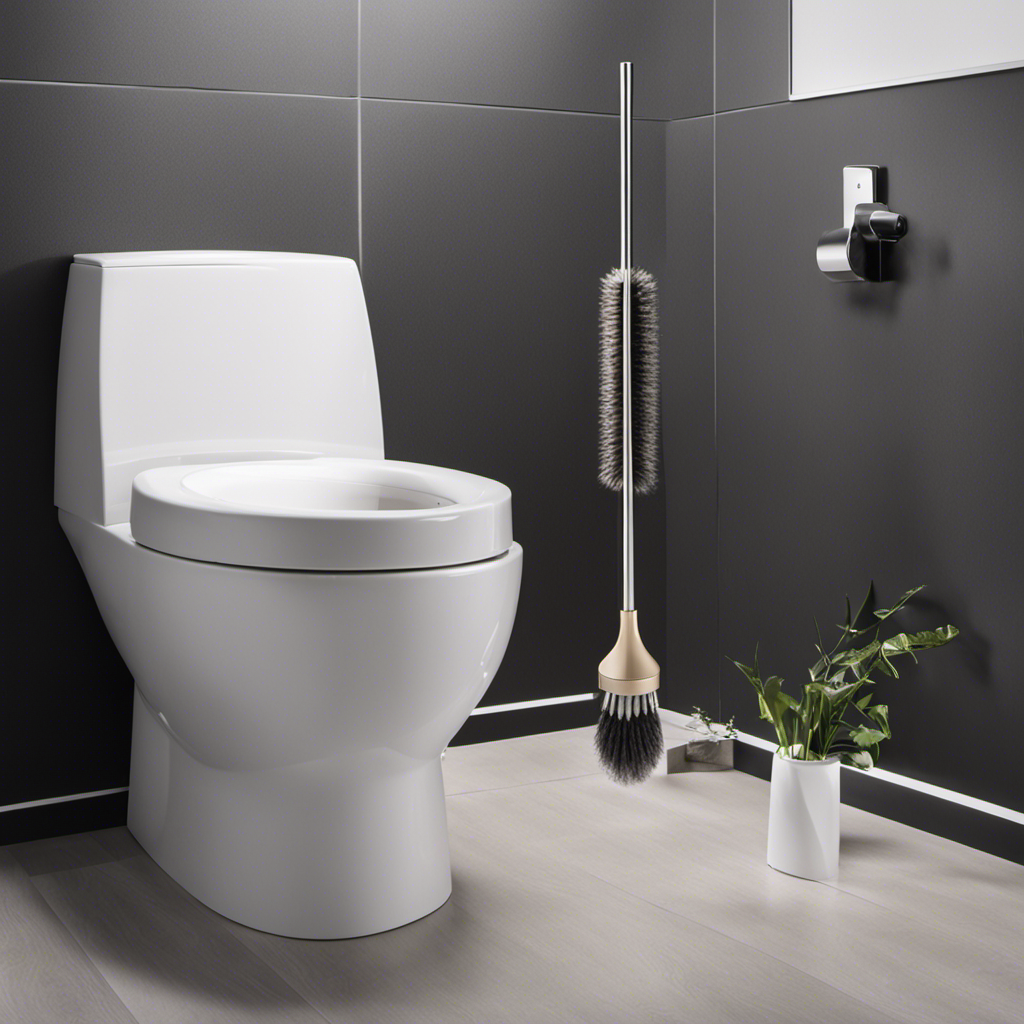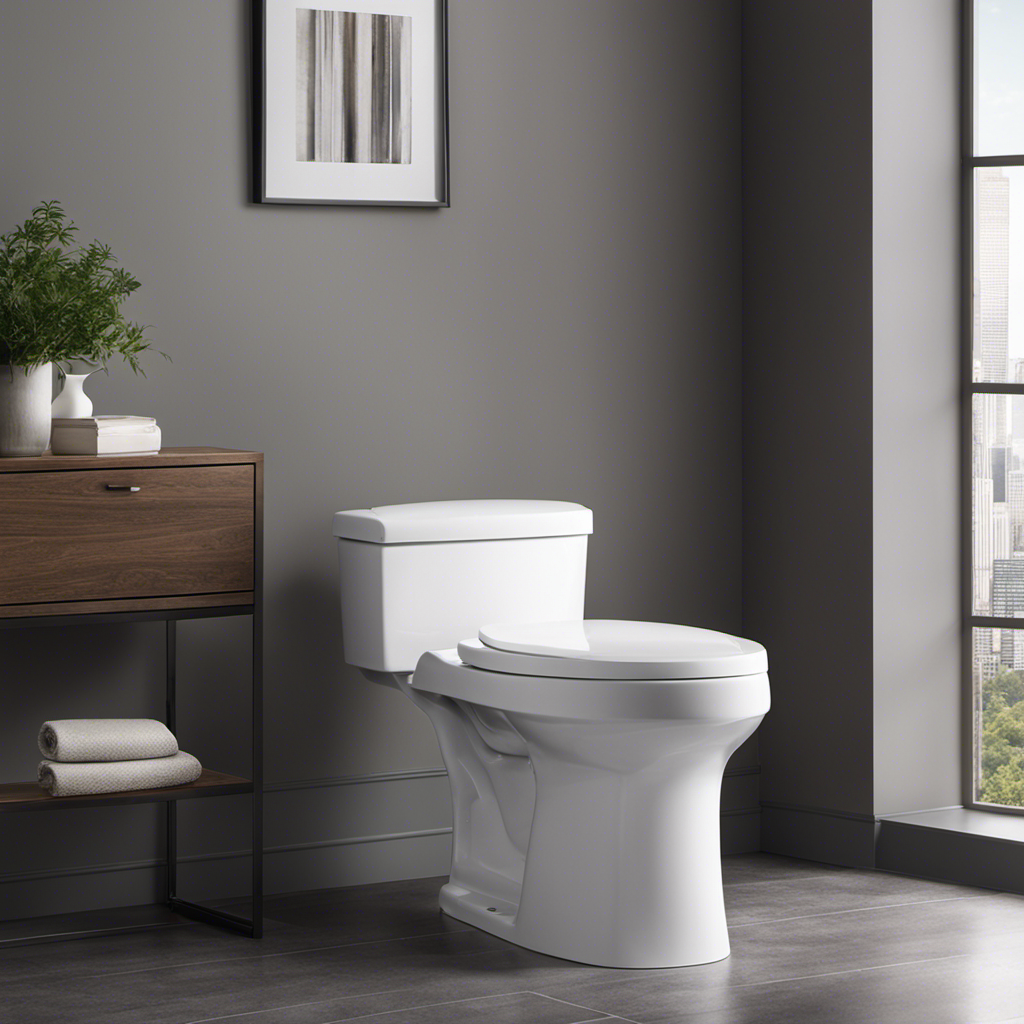Did you know that the average lifespan of a toilet brush is only six months? That’s right, your trusty cleaning companion may not be as effective as you think after that amount of time.
In this article, we will explore the significance of regular toilet brush replacement and provide you with a recommended timeframe for doing so. We will also discuss the signs that indicate the need for a new brush and share proper maintenance practices to extend its lifespan.
Plus, we’ll even introduce you to some eco-friendly alternatives.
Key Takeaways
- Regular replacement of toilet brushes is important for maintaining good hygiene in the bathroom.
- Experts recommend replacing toilet brushes every 3 to 6 months.
- Signs such as frayed bristles and bacteria accumulation indicate the need for a new toilet brush.
- Investing in high-quality brands and practicing proper maintenance can extend the lifespan of a toilet brush.
Significance of Regular Toilet Brush Replacement
You should understand the significance of regularly replacing your toilet brush.
Maintaining good hygiene in your bathroom is of utmost importance, and a clean toilet brush plays a key role in achieving that.
Over time, the bristles of the brush can become worn out and dirty, making it less effective in cleaning your toilet.
By replacing it regularly, you ensure that you have a brush with clean and sturdy bristles that can effectively remove stains and bacteria from your toilet bowl.
This not only helps in maintaining a clean and fresh-smelling bathroom but also reduces the risk of spreading germs and infections.
Moreover, regular replacement of your toilet brush is cost-effective in the long run.
By investing in a new brush periodically, you can avoid the need for expensive cleaning products or professional cleaning services.
Factors Affecting Toilet Brush Lifespan
If cared for properly, factors like cleaning frequency and storage conditions can affect how long your toilet brush lasts. Maintaining good toilet brush hygiene is essential for both the durability and effectiveness of the brush. Cleaning your brush after each use and allowing it to dry completely can help prevent the growth of bacteria and mold. Additionally, storing the brush in a well-ventilated area away from moisture can further prolong its lifespan.
When it comes to materials, toilet brushes made of durable and non-porous materials such as silicone or plastic are recommended. These materials are easier to clean and less likely to harbor bacteria. By considering these factors and practicing good toilet brush hygiene, you can ensure that your toilet brush lasts longer and remains effective in keeping your toilet clean.
Now, let’s discuss the recommended timeframe for replacing toilet brushes.
Recommended Timeframe for Replacing Toilet Brushes
To ensure optimal cleanliness, it’s important to regularly refresh your bathroom cleaning tool. When it comes to toilet brush hygiene, replacing your toilet brush at the right time is crucial.
While there is no set rule, experts recommend replacing your toilet brush every three to six months. Over time, the bristles of the brush can become frayed and less effective at cleaning. Additionally, bacteria and germs can accumulate on the brush, even with regular cleaning.
To maintain a hygienic bathroom environment, it’s essential to invest in a high-quality toilet brush from reputable brands. Some of the best toilet brush brands known for their durability and effectiveness include OXO, Simplehuman, and Clorox.
Signs That Indicate the Need for a New Toilet Brush
When it’s time for a replacement, you’ll notice bristles that are bent or worn out. Maintaining toilet brush hygiene is essential to keep your bathroom clean and bacteria-free. The best toilet brushes are made of durable materials that resist wear and tear. Here is a comparison table of the most common toilet brush materials:
| Material | Pros | Cons |
|---|---|---|
| Plastic | Affordable and lightweight | Can break easily |
| Silicone | Durable and easy to clean | More expensive than plastic |
| Stainless steel | Long-lasting and rust-resistant | Can be more expensive than other materials |
Knowing when to replace your toilet brush is crucial for maintaining proper hygiene. Bent or worn-out bristles can harbor bacteria and spread germs. By regularly inspecting your toilet brush and replacing it when necessary, you can ensure the cleanliness of your bathroom. In the next section, we will discuss proper maintenance practices to extend the lifespan of your toilet brush.
Proper Maintenance Practices to Extend Toilet Brush Lifespan
Regularly cleaning and drying your toilet brush after each use can help extend its lifespan. To ensure proper maintenance and prevent bacterial growth, it is essential to follow effective toilet brush cleaning techniques.
After using the brush, rinse it thoroughly under running water to remove any residue. Next, apply a disinfectant cleaner or bleach to the bristles and scrub the brush holder as well. Rinse again and allow the brush to air dry completely before storing it away.
Avoid leaving the brush in a damp environment, as this can promote bacterial growth. Additionally, it is recommended to replace your toilet brush every six months to a year, depending on usage and wear.
Eco-friendly Alternatives to Traditional Toilet Brushes
Using eco-friendly alternatives, such as bamboo toilet brushes or silicone toilet scrubbers, can help reduce waste and minimize environmental impact. By opting for these eco-friendly cleaning products, you can make a positive contribution to preserving our planet.
Here are some DIY toilet brush alternatives to consider:
-
Bamboo Toilet Brushes: Made from sustainable bamboo, these brushes are durable, biodegradable, and have antimicrobial properties. They effectively clean your toilet while being gentle on the environment.
-
Silicone Toilet Scrubbers: These reusable scrubbers are made from non-toxic silicone, making them a safe and eco-friendly option. They are easy to clean, and their flexible bristles reach every nook and cranny.
-
Natural Fiber Brushes: Made from materials like natural bristles or coconut fibers, these brushes are biodegradable and compostable. They provide effective cleaning without harming the environment.
-
DIY Options: You can even make your own toilet brush using items like old toothbrushes or repurposed materials. Get creative and reduce waste while maintaining a clean toilet.
Conclusion
In conclusion, it’s essential to replace your toilet brush regularly to maintain cleanliness and hygiene in your bathroom. Factors such as frequency of use and proper maintenance practices can affect the lifespan of your toilet brush.
As a general rule, it’s recommended to replace your toilet brush every six months to a year. If you notice fraying bristles, unpleasant odor, or visible wear and tear, it’s time to invest in a new one.
Remember, ‘Out with the old, in with the new’ – keeping your toilet brush fresh will ensure a sparkling clean bathroom.










